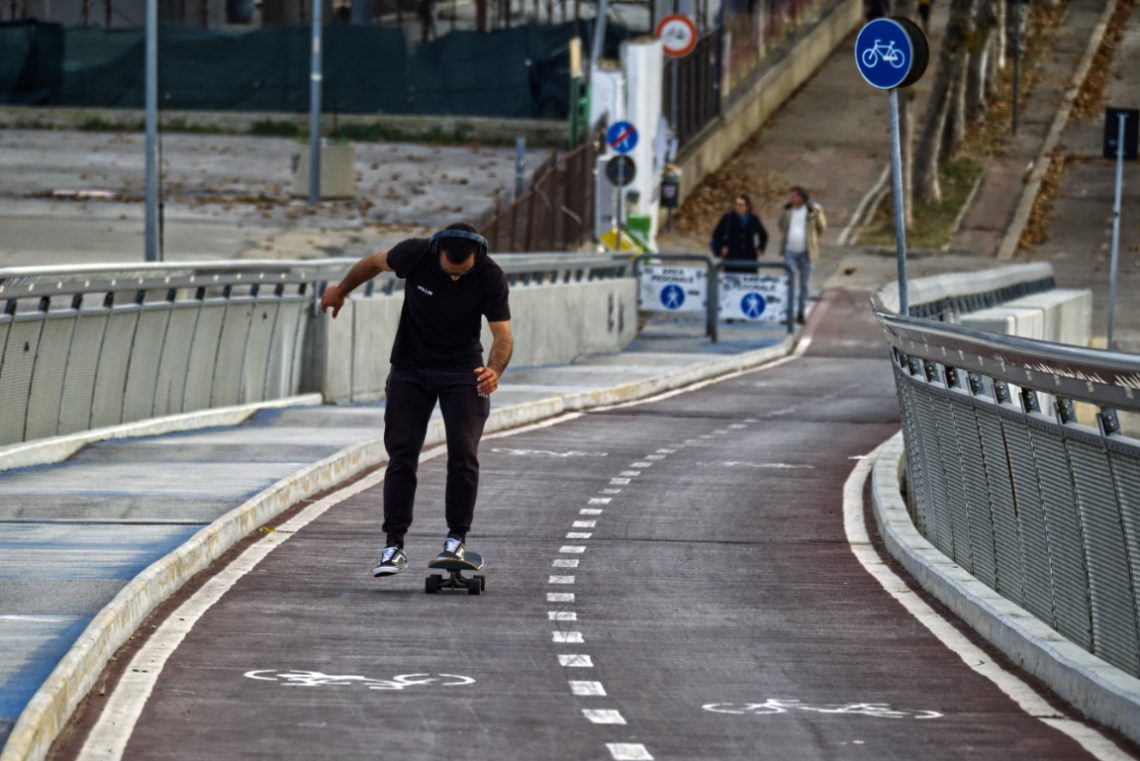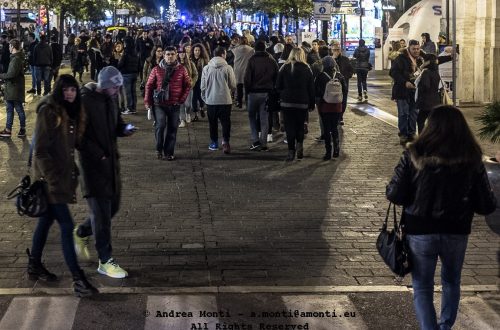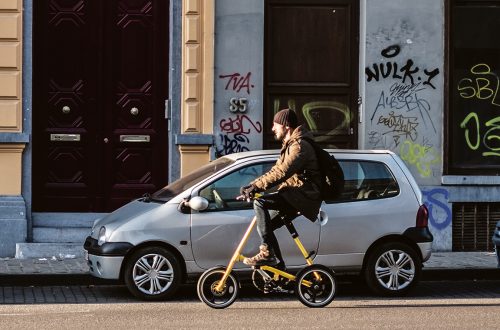
A Skateboarder
I took this shot with a long lens, standing just far enough back to flatten the scene and compress the zig-zag of the bike lane into a graphic, winding ribbon. What drew me to the moment was the contrast between the physical tension of the skateboarder’s posture and the rigid lines of the urban environment. He’s caught mid-shift — arms out, knees bent, entirely present in his balance. No theatricality, no posing. Just rhythm and gravity.
The geometry of the path worked as an unintentional compositional gift. The white lines, curved rails, and signage almost funnel the viewer’s attention into the skater’s hunched figure. A classic leading-lines scenario, but more accidental than designed. That kind of spontaneity is what I look for in this type of street work. You plan nothing, and then everything falls into place — if you’re quick enough.
Technically, it wasn’t the easiest exposure. The light was diffuse, as the day was grey and the sky featureless. I had to push the ISO slightly higher than I’d prefer, to keep enough shutter speed and avoid motion blur. The image still holds detail where it matters, especially in the skater’s clothing and deck. Depth of field is shallow enough to separate him from the background, but not so narrow that the context disappears. You can still read the road, the signage, and the two pedestrians behind — each serving as a soft reminder of place and function.
The framing is tight enough to isolate the subject without clipping any essential elements. I left more space to the right, allowing the path to breathe and the subject to move into the frame. That slight asymmetry keeps it from feeling static, even though the moment itself is almost frozen.
I’m glad I didn’t intervene. This was a scene to observe, not direct. A private moment of motion, soundtracked by headphones and powered by muscle memory, unfolding in a space that was never meant for skating but somehow suited it perfectly.




